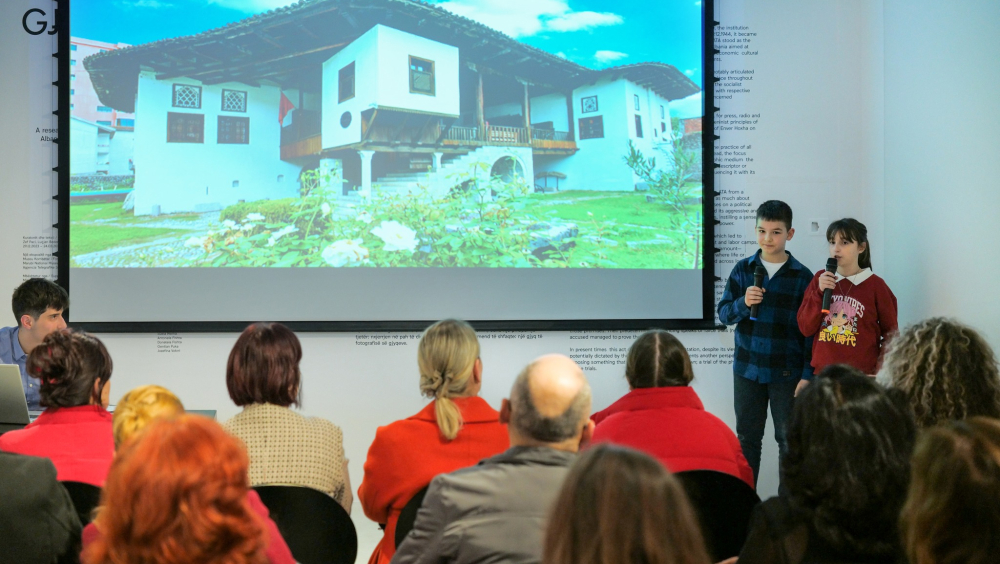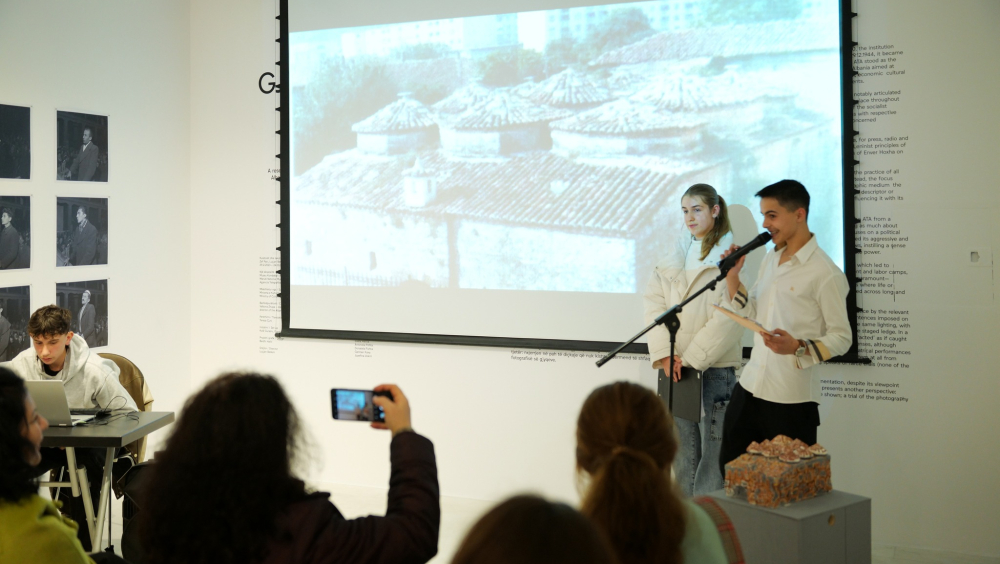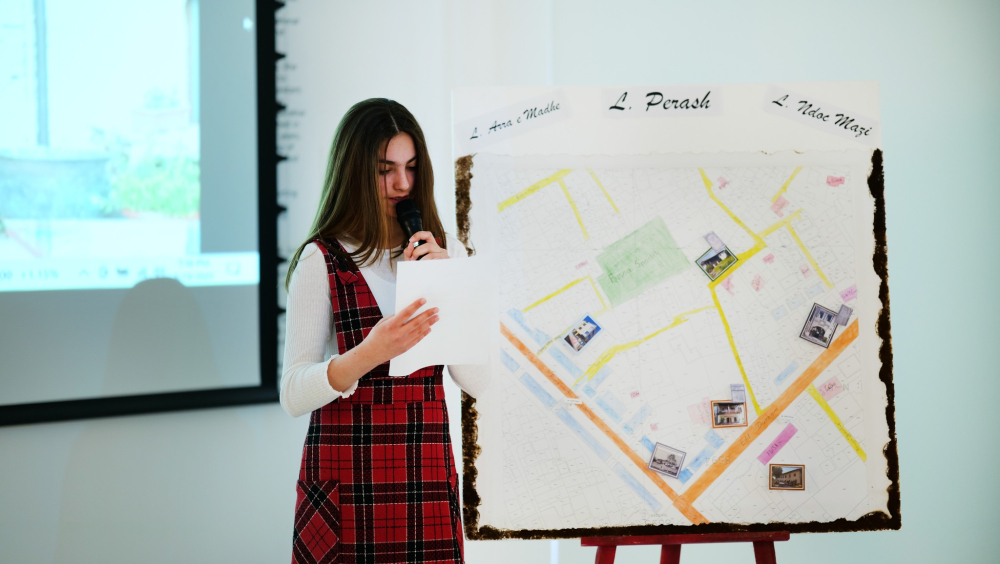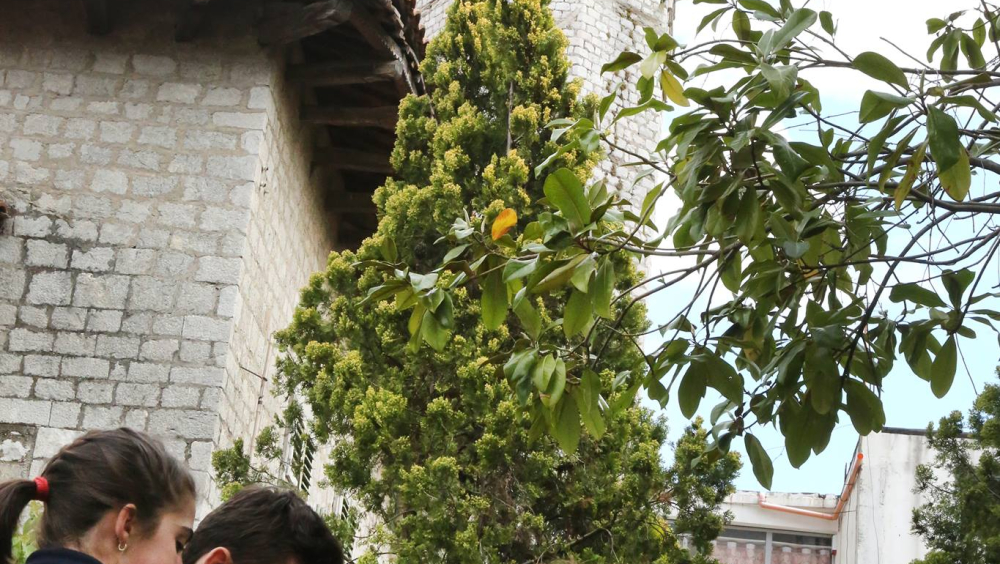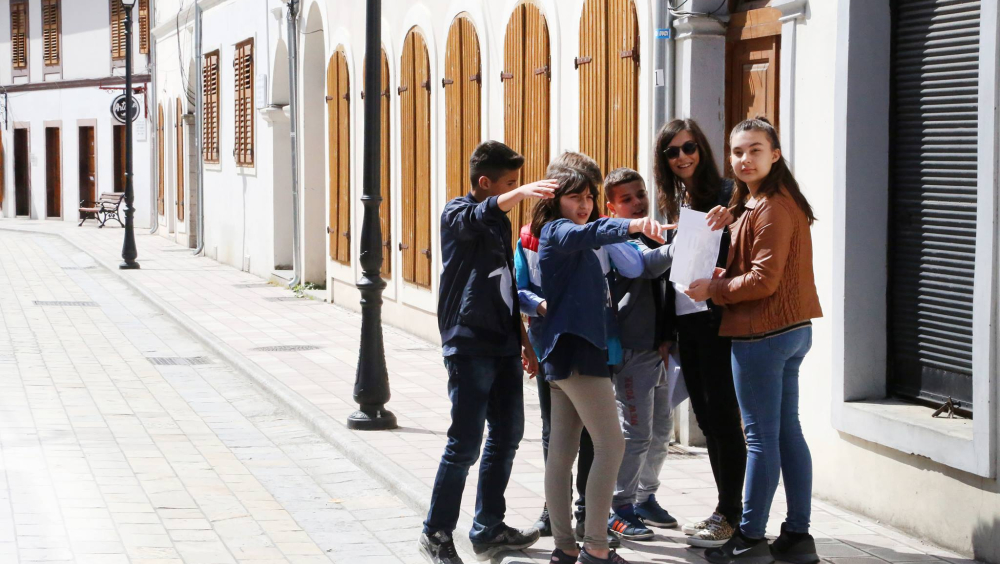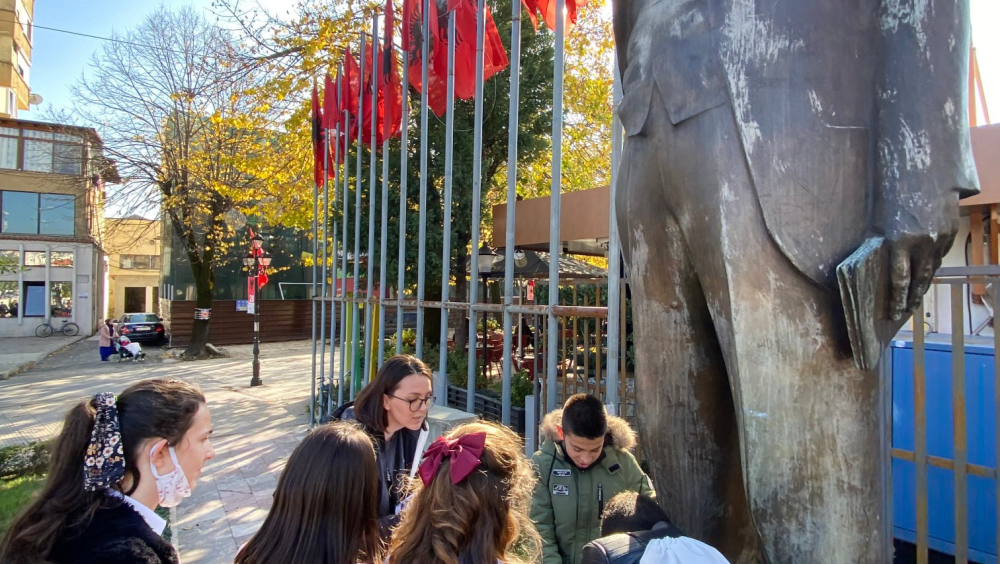What's the city hiding?
In the past thirty years, Albania has undergone critical urban transformations leading to the destruction, loss, or changing of the function of heritage sites and the memories they carry. This has affected mainly the largest cities, leading to a total alienation of urban spaces. Younger generations have lost touch with the city's memories as told by their grandparents.
Marubi National Museum of Photography - also the first photo studio - has an archive of more than 500,000 images documenting life in Albania for almost a century (1865-1989). Since 2016, we have had an educational program with a main focus on students, teachers, and families.
One of our annual projects aims to discover the city's untold tales. The participants in this activity go on a treasure hunt throughout the city to learn about heritage that has been lost or destroyed and how people's memories of these locations have evolved over time.
Through various mediums such as photography, video interviews, maps, and models, participants trace events, personalities, buildings, traditions, and crafts of the neighborhood they inhabit. They do so by gathering memories from parents, grandparents, neighbor and residents, thereby constructing a mosaic of histories linked to the urban memory of the space they live in daily.
With this project, we hope to go beyond and create an app in which participants' alter egos 'travel' to different Albanian cities, detecting heritage stories and characters involved in order to educate future generations about the importance of cultural heritage preservation. Images from local/national archives as well as the Marubi archive, will be used to illustrate their journey in order to draw attention back to the relevance of the archives.
“What’s the city hiding” is a treasure hunt for lost cultural heritage organized by the Marubi Museum in Shkodra as a walking tour for primary and secondary school students. The meeting point is the museum, where participants are explained the game and its rules.The group leader, chosen by the participants, is given a map of the city and an envelope with clues to solve in each location. After arriving at the first location and solving the first clue, they are shown a picture of the location similar to that in the ‘Marubi Times’ on a tablet, where they can zoom in on all the details, and also printed in a small scale to attach to the map. They then move on to the next location until they finish the game.At the end of the game, the first group to return to the museum is proclaimed the “Guardian of the City Heritage.”
During the long walk around the city, we noticed that most of the young participants were unaware of the city's heritage. Many of them did not know the stories behind the buildings they passed by every day. There are a number of factors that contribute to this, but among the main ones are a disregard for heritage preservation over the last thirty years, the disappearance of significant landmarks from urban memory, inadequate signage at heritage sites, the destruction of the city center due to urban speculation, and a lack of widespread community involvement in heritage projects.
For more than a century, Marubi photographers have captured historical buildings, personalities, and artifacts, contributing to the preservation of this heritage over the years. This heritage, which is now often only ‘visible’ and ‘tactile’ in this collection, is an incredible starting point for storytelling.
As a starting point for the first two editions, the Marubi Museum archive has been instrumental. Through images and information surrounding them, participants have uncovered the old Shkodra, as well as the history of buildings and monuments dedicated to personalities of national importance. Having reviewed the outcomes of the first two editions, we have opted to proceed with a new program, centering on narratives that are more deeply rooted in our local context.
The program aims to involve students from public secondary schools - from 5th grade to 9th grade - who, assisted by teaching staff, family, and the community, get to know better the history that has shaped the identity of inhabited spaces, often neglected, forgotten, left unrepresented, or simply resurface in memory.
During the 2 months duration of the work process, school teaching staff will be assisted by the Marubi Museum staff, both in terms of guiding lines for working with the group of participants and technical assistance in the final presentation that students will realize in the museum.
Impressions from the participants:
"I pass by here every day and frequently have lunch with my parents, but I had no idea this building was Shkodra first municipality." (Referring to Shkodra first municipal building, which is now a bar and restaurant.)
“What? This building is the one in the photo. Nooo, it can’t be!! Incredible” (On Shkodra’s first public garden, now a bar and restaurant.)
"I'm surprised by the hidden stories of these places. I'm going to tell my friends at school and my parents at home about them.”
The Marubi archive offers a rich documentation of all different urban layers of the largest Albanian cities. Therefore, we would like to create an app to navigate through buildings, monuments, and neighborhoods while accompanying them with images from the archive through interactive tools that show how the urban texture has changed over the years.
The app would offer a chance for intergenerational conversation and sharing, as well as the creation of memories that could benefit from narrative elaboration. It could feature interactive maps and walking tours, allowing users to explore the location and its cultural heritage in detail, and be easily accessible to anyone with a smartphone or tablet.
The app could also include features that allow users to contribute to the preservation of cultural heritage. For instance, users would be encouraged to upload their own photos and stories related to the location, creating a new archive of images and memories. This would not only add to the archive of images but also encourage users to take an active role in preserving cultural heritage.
By providing an engaging and accessible platform for exploring cultural heritage, the app can inspire a new generation of enthusiasts and advocates, ensuring that the memory of significant cultural sites and events is preserved for years to come.
For contacts do not hesitate to contact me:
Tereza Çuni, Head of the Communication and Promotion Department for Marubi National Museum of Phototography
Email: tereza.cuni@marubi.gov.al
The preservation of cultural heritage is one of the main issues in cultural discourse in Albania.
The project we developed takes into consideration this concern and investigates opportunities presented by a photography archive like Marubi, which has persevered through difficult circumstances and has provided us with an incredible window into Albanian history for almost a century.
Heritage stories are a manifesto of cultural affiliation among countries. In the street of Shkodra and other Albanian cities we can encounter different periods of our European belonging, tales of the past times that shape our identity, but at the same time they express shared cultural values and responsibilities towards awareness and protection.
The app serves as an effective tool for educating the younger generation about the significance of preserving cultural heritage and fostering a sense of admiration and pride for the cultural heritage of their communities. Although it could be utilized as a tool for promoting tourism in the future, our main objective is to shed light on the importance of preserving heritage, which should be regarded as a precious asset for future generations.
